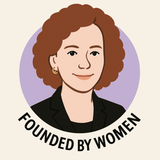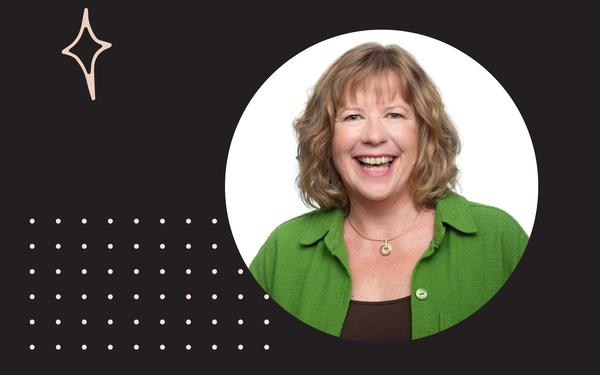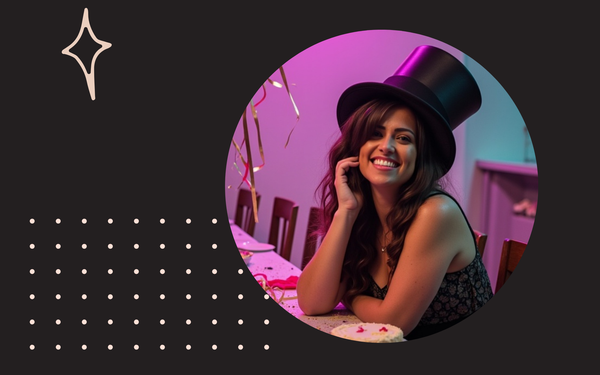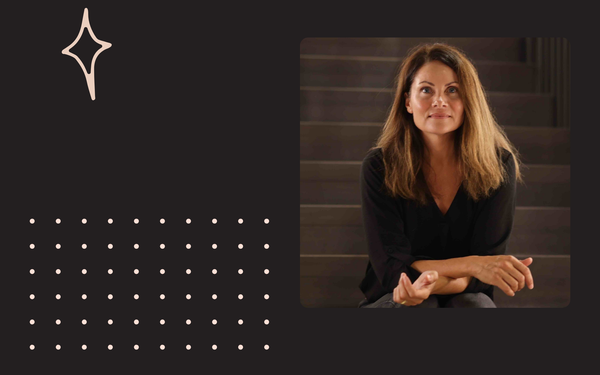From Postpartum Isolation to Empowering Sustainable Brands: How Andrea Olmsted Built Sustainable Fashion PR While Raising Two Kids
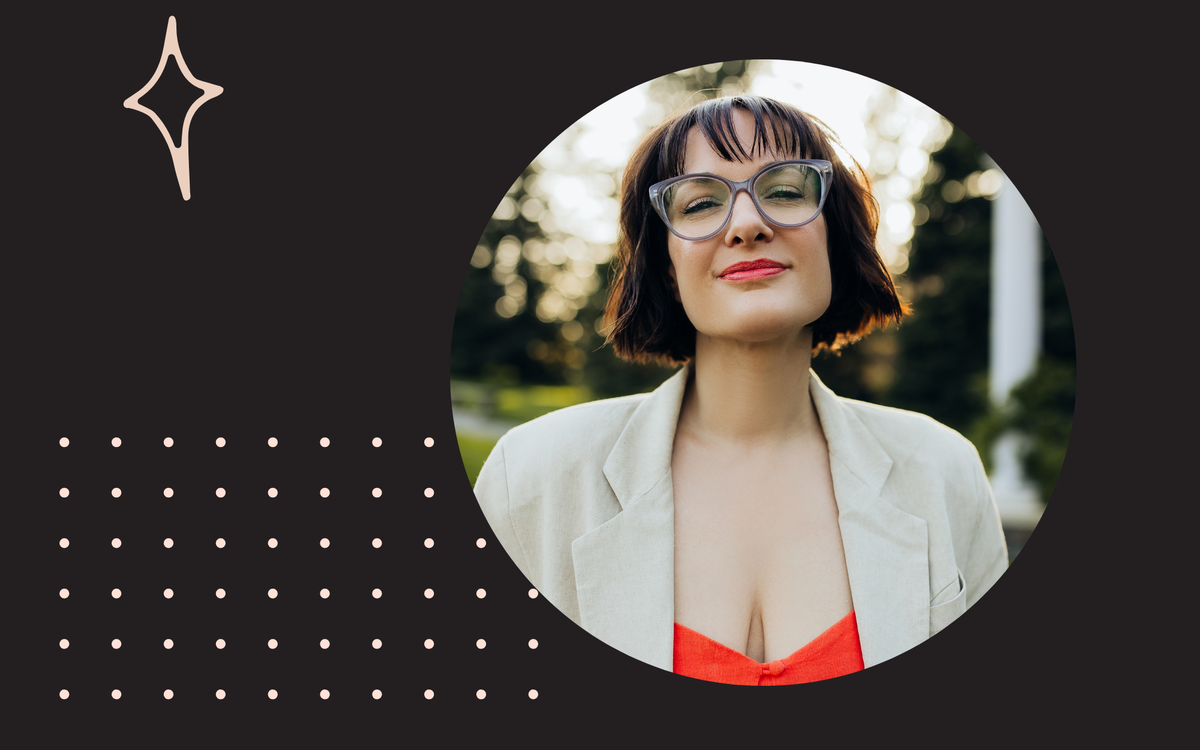
Andrea Olmsted launched Sustainable Fashion PR shortly after her youngest child turned two. During postpartum, the majority of her time was given to her children, although she spent several nights a month freelance writing. It wasn't until her husband at the time had been laid off from the tech industry that she felt the urgency of getting her business up and running again. She was nervous, yet excited to have some sense of community after what felt like a long stretch of isolation from the outside world.
At first, it took a while to get the hang of balancing motherhood with entrepreneurship. But soon she got used to waking up before her kids so she could pick up a couple hours before the morning routine. What was such a challenging transition in the beginning became a superpower of added capacity to get things done in limited timeframes. This, combined with the experience she gained in her twenties and early thirties working with inspiring people, companies, and organizations centered around making the fashion industry more sustainable and socially equitable, provided her with the insight she needed to communicate these efforts to a mainstream audience.
As the former West Coast Regional Director for Fashion Revolution and co-founder of the Sustainable Fashion Alliance, Andrea spent two decades working in the ethical fashion space. She's worked with organizations like Fibershed, Good Clothing Co., and Huston Textile Co., and she's a freelance writer for Sourcing Journal covering fashion business and sustainable innovations. That dual perspective as both journalist and publicist has given her a unique advantage: she's both the receiver of pitches and the person pitching, which has taught her humility and helped her build genuine relationships rather than relying on desperate sales rhetoric.
Andrea discovered a talent for becoming the bridge to help smaller sustainable brands compete with the big guys and secure press coverage in mainstream media. A common thread among her clients has been shared honesty and a desire to challenge the status quo. Many of her PR contracts have grown into genuine friendships.
But Andrea didn't stop at done-for-you services. She released her own media lists online and created an online course called "Intentional PR 101" to teach sustainable fashion brands how to manage their own PR. It was a scary move at first, but as the economy shifted and clients requested discounts, she decided to create more accessible offerings to help small brands without the budget for full-service PR contracts.
In this conversation, Andrea shares how she turned postpartum isolation into a business opportunity, how being both a journalist and publicist helps her navigate the ethics of avoiding greenwashing, and her advice for other women about not underselling themselves, owning their skillsets, and having the confidence to know they're worth it.
Question 1: You've spent two decades working in the ethical fashion space, including as the former West Coast Regional Director for Fashion Revolution and co-founder of the Sustainable Fashion Alliance. What led you to launch Sustainable Fashion PR as your own company, and how did your experience working with organizations like Fibershed, Good Clothing Co., and Huston Textile Co. shape your understanding of what sustainable fashion brands need from a PR partner versus what traditional fashion PR agencies were offering?
I started Sustainable Fashion PR shortly after my youngest child turned two. During postpartum, the majority of my time was given to my children, although I spent several nights a month freelance writing. It wasn’t until my husband at the time had been laid off from the tech industry that I felt the urgency of getting my business up and running again. I was nervous, yet excited to have some sense of community after what felt like a long stretch of isolation from the outside world. At first, it took a while to get the hang of balancing motherhood with entrepreneurship, but soon I got used to waking up before my kids so I could pick up a couple hours before the morning routine. What was such a challenging transition in the beginning became a super power of added capacity to get things done in limited timeframes. This, combined with the experience I am so grateful to have received, in my twenties and early thirties working with inspiring people, companies and organizations centered around making the fashion industry a more sustainable and socially equitable space, provided me with the insight I needed to communicate these efforts to a mainstream audience. I realized that all my previous roles had essentially focused on empowering smaller brands to compete with the “big guys”. I discovered a talent for becoming the bridge to help them secure press coverage in mainstream media. A common thread among my clients has been shared honesty and a desire to challenge the status quo—something very different from the social dynamic of any jobs I had had in the corporate past. With that, I’m happy to report that many of my “PR contracts” have grown into genuine friendships.
Question 2: You're also a freelance writer covering fashion business and sustainable innovations, which gives you insight into both sides of the media relationship. How does being a journalist in addition to running a PR agency inform the way you pitch stories and work with clients? Have there been moments where you've had to turn down a client because their sustainability claims didn't hold up, and how do you navigate the line between advocating for your clients and avoiding greenwashing?
Having the dual perspective of writer and publicist has been so helpful in navigating PR strategies and outreach that’s more than just a blast email or press release. It has given me the gift of being both the receiver of pitches and the person who, in some cases, really needs to get their client out there and written about. It’s provided me with a good dose of humility and also a reminder that at the end of the day we are all humans experiencing this life in diverse ways, but that we can all relate to challenges, traumas, joys and an overall sense of connection. Having this mentality, as opposed to a desperate, “lack” outlook, has really provided more community, relationships and opportunities into my sphere. The sales pitch rhetoric I was taught in the nineties working my first retail job is dead. Instead, coming into a pitch with how I can be helpful to these journalists, how I can make a connection, is something that provides palatability and better results. There’s also the ethics behind it. I have been very fortunate in being able to work with brands I truly believe in and I know that is certainly a privilege. If I take on someone who is greenwashing it’s not only against what I believe in and know is right, it dilutes my voice and the credibility of my business.
Question 3: You've released your own media lists online and have an online class to teach others how you do what you do. That's a bold move for a PR agency. What made you decide to empower brands with those connections and skills rather than keeping them as proprietary knowledge, and what advice would you give to other female founders about deciding when to productize their expertise versus selling only done-for-you services?
It was a scary thing at the beginning. I think in our society we’re taught to keep things close to the chest, but it doesn't really serve us. As the economy started to shift and I saw more clients requesting discounts, I decided to create more accessible offerings that might help small brands without the budget for a full service PR contract. I took a look at what I could share on a larger scale and the media lists I had been keeping up for years were a no brainer. Plus, it felt really good to know that maybe these lists could help other small businesses grow. I think the hardest thing about putting your own products out there is how not to under sell yourself. I worked for three months on my online course. It took multiple recordings and I ended up changing the format several times to get it right. Am I charging too little? Am I charging too much? I think in general as a woman I have undersold myself for years. This is something I’m admittedly working through in so many facets of my life: how to really own my skillsets and know that I have worked hard to be able to provide the quality work that I do now. From someone else’s eyes I may be a success, but it is a daily lesson and practice of self love to truly accept that I’m a bad ass too, and I need to be confident in that. I think more and more women are realizing this every day– yes YOU– so don’t be afraid to ask for compensation for your time, your shared skillset, your expertise. Everything we do is an exchange of time and energy. You’re worth it, and someone out there is looking for what you’re putting out there and finds value in it.
Are you a woman leader with an inspiring journey to tell? Founded by Women is on a mission to elevate and amplify the voices of women making an impact.
If you're breaking barriers, driving change, or paving the way for others, we’d love to feature your story. Get in touch with us today!
👉 hi@foundedbywomen.org
